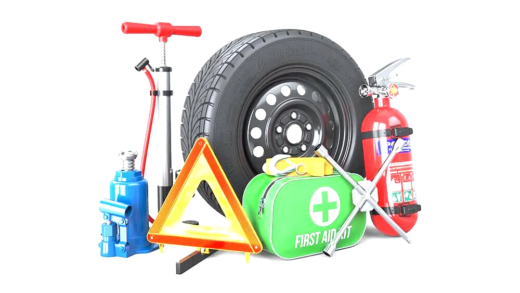This article explores the implications of traffic light malfunctions, providing insights into what drivers need to know. It covers common causes, legal consequences, safety risks, technology behind traffic lights, alternatives for when they fail, and international regulations.
What Happens When a Traffic Light Stays Red Too Long?
Traffic light malfunction can lead to significant frustration for drivers. When a traffic light stays red too long, it disrupts the flow of traffic and can create confusion at intersections. In busy urban areas, this can lead to traffic jams, increased travel times, and even road rage. Drivers may find themselves stuck, watching the red light with impatience while others try to navigate around them.
Moreover, prolonged red lights pose safety risks. Drivers might decide to run a red light, thinking it’s safer to proceed rather than wait indefinitely. This action can lead to serious accidents, putting everyone on the road at risk. According to the National Highway Traffic Safety Administration (NHTSA), running a red light is a leading cause of urban crashes, resulting in thousands of injuries and fatalities each year.
To minimize frustration, local authorities should be notified about malfunctioning traffic lights. Understanding the effects of these malfunctions can help drivers remain patient and seek alternative routes if necessary.
Why Do Traffic Lights Malfunction?
Traffic light malfunctions can occur for various reasons, and recognizing these can help drivers better understand the situation. Common causes include electrical failures, software glitches, or physical damage from accidents or weather conditions. For instance, a power outage can render traffic signals inoperable, leading to confusion at intersections.
Another reason for malfunctions is outdated technology. Many cities still rely on older traffic control systems that are prone to breakdowns. Additionally, construction work or road maintenance can inadvertently affect traffic signals, causing them to malfunction temporarily.
Understanding these causes can prepare drivers for unexpected situations. It’s essential to stay alert and cautious at intersections where traffic lights may not be functioning properly.
How to Tell if a Traffic Light is Broken?
Identifying a broken traffic light is crucial for ensuring safety on the road. Some signs of malfunction include:
- Flashing yellow or red lights, indicating a malfunction.
- No lights displaying at all, suggesting a complete failure.
- Lights changing erratically, which can confuse drivers.
- Visible physical damage or debris around the traffic signal.
If you notice any of these signs, it’s important to approach the intersection with caution. Always be prepared to yield the right of way and make safe decisions based on the surrounding traffic conditions. Reporting the malfunction to local authorities can also help get the signal repaired promptly.
What Should You Do if Stuck at a Red Light That Won’t Change?
Being stuck at a red light that won’t change can be frustrating. Here are some steps to take if you find yourself in this situation:
- Stay calm and patient; avoid aggressive behavior.
- Look for any signs indicating the malfunction.
- After a reasonable wait (usually a few minutes), check for traffic around you.
- If safe, consider turning your vehicle around if the intersection allows it.
- Report the malfunction to local traffic authorities via phone or app.
By following these steps, you can handle the situation safely and responsibly while minimizing disruption to your journey.
Legal Consequences of Running a Red Light
Running a red light can lead to serious legal consequences for drivers. The penalties vary by state or country but generally include hefty fines, points on the driver’s license, and possible increases in insurance premiums. For instance, in many U.S. states, the fine for running a red light can range from $50 to $500, depending on the jurisdiction and whether it resulted in an accident.
Additionally, if a driver runs a red light and causes an accident, they may face more severe repercussions. This can include civil liability, where the driver is held responsible for damages and injuries resulting from the crash. In some cases, reckless driving charges may be pursued, which could lead to further legal penalties, including license suspension or even jail time.
It’s crucial for drivers to be aware of the legal implications of their actions at traffic signals. Understanding the rules of the road not only helps avoid fines but also promotes safer driving habits.
Safety Risks Associated with Running a Red Light
Running a red light poses significant safety risks for both the driver and others on the road. The immediate danger lies in the potential for collisions, which can occur at high speeds, leading to severe injuries or fatalities. According to the Insurance Institute for Highway Safety (IIHS), running red lights contributes to about 30% of all intersection crashes.
Moreover, the risks extend beyond just the driver. Passengers, pedestrians, and cyclists are also at risk when a driver disregards traffic signals. In fact, a pedestrian struck by a vehicle running a red light is much more likely to suffer serious injuries than in a collision at lower speeds. The emotional toll on families and communities affected by these accidents can be devastating.
To mitigate these risks, drivers should always adhere to traffic signals and remain vigilant at intersections. Understanding the importance of obeying red lights can help reduce the likelihood of tragic accidents.
Technology Behind Traffic Lights
The technology behind traffic lights plays a crucial role in regulating traffic flow and ensuring safety on the roads. Modern traffic signals often utilize advanced systems that include sensors, timers, and communication networks to optimize traffic management. For example, many urban areas use inductive loop sensors embedded in the road to detect vehicle presence and adjust signal timing accordingly.
Additionally, traffic lights are increasingly being integrated with smart city technology. This includes real-time monitoring and data analysis, which allows for more efficient traffic management. Some systems can even communicate with vehicles, providing drivers with alerts about upcoming signals and potential delays.
Understanding how these systems work can help drivers appreciate the importance of following traffic signals. When traffic lights malfunction, it can create chaos, emphasizing the need for reliable technology to maintain order on the roads.
Alternatives for Malfunctioning Traffic Lights
When traffic lights fail, drivers need to know their options. Traffic light malfunction can lead to confusion and dangerous situations at intersections. Here are some alternatives to consider:
- Yield to Traffic: If a traffic light is non-functional, treat the intersection as a four-way stop. This means yielding to vehicles that arrive first or to those on your right.
- Follow Local Laws: Be aware of specific local laws regarding malfunctioning traffic signals, as they may vary significantly.
- Use Caution: Always approach the intersection with caution, even if the light appears to be malfunctioning. Look for pedestrians and cyclists before proceeding.
- Contact Authorities: Report the malfunction to local traffic authorities immediately. This can help ensure that the light is repaired as quickly as possible.
By understanding these alternatives, drivers can maintain safety and order on the roads, even when traffic lights are malfunctioning.
Impact of Waiting at a Red Light on Driving Habits
Waiting at a red light can significantly affect driving habits. Traffic light malfunctions, particularly prolonged stops, can lead to increased driver frustration and impatience. This situation can alter a driver’s behavior in several ways:
- Increased Aggression: Long waits at red lights can lead to aggressive driving behaviors, such as running red lights or making unsafe turns.
- Stress Levels: Prolonged stops can elevate stress levels for drivers, impacting their focus and decision-making ability.
- Habit Formation: Frequent encounters with malfunctioning traffic lights can create bad habits, such as ignoring signals altogether.
Ultimately, understanding how waiting at red lights affects behavior can help drivers remain calm and make safer choices on the road.
How Different Countries Handle Traffic Light Malfunctions
Different countries have various approaches to managing traffic light malfunctions. Understanding these can provide insights into how to navigate such situations effectively. Here are some examples:
- United States: In the U.S., the common practice is to treat malfunctioning lights as four-way stops. Drivers are expected to yield based on who arrives first.
- Germany: Germany has a more structured approach, with specific laws dictating that drivers must stop and look for police instructions when lights fail.
- Japan: In Japan, the emphasis is on pedestrian safety. Drivers must be especially cautious and yield to pedestrians even when lights malfunction.
By learning how different countries handle traffic light issues, drivers can better prepare for unexpected situations and follow best practices to ensure their safety and that of others on the road.





Comments are closed.